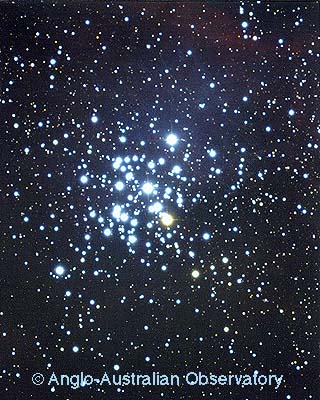 But
it is much better at determining the distance to a cluster
of stars, where all the stars are at the same (unknown) distance. Why?
But
it is much better at determining the distance to a cluster
of stars, where all the stars are at the same (unknown) distance. Why?
But it is about finding the distance to a star.
How does it work?
Example:
I am looking at Aldebaran. I measure its apparent magnitude to be m=0.86. I take a spectrum of it and classify it as a K5III (red giant). These stars have absolute magnitude of about -0.2.Spectroscopic parallax is not all that accurate for individual stars. There is an intrinsic dispersion of about 1 magnitude in the absolute magnitudes of stars of a given spectral class.so m-M = 0.86 - (-0.2) = 1.06. 5log(d)-5 = 1.06 so d=11.5 pc Well, that's close enough to measure by parallax. What is Aldebaran's distance? d=16 pc. Not very accurate...
What if there was dust involved?
1 magnitude error corresponds to a factor of 2.5 in flux, or a factor of 1.6 in distance.
 But
it is much better at determining the distance to a cluster
of stars, where all the stars are at the same (unknown) distance. Why?
But
it is much better at determining the distance to a cluster
of stars, where all the stars are at the same (unknown) distance. Why?